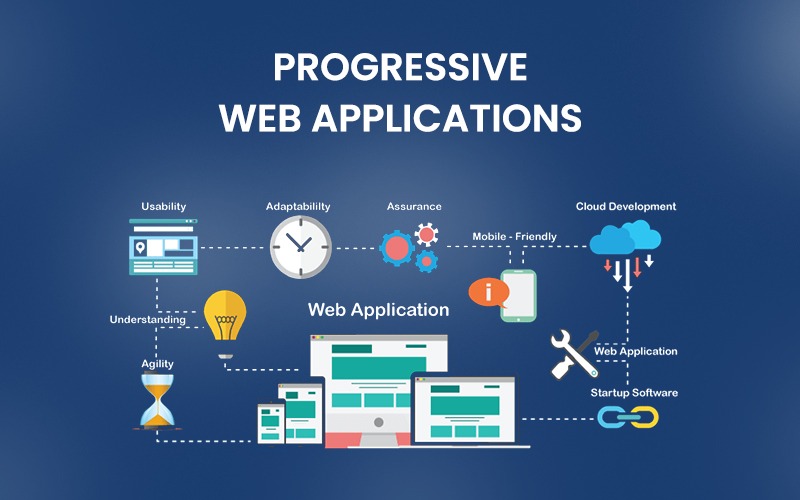The Rise of Progressive Web Apps in 2024: The Future is Here
The mobile app landscape is constantly evolving, and in 2024, one trend is taking centre stage: Progressive Web Application (PWAs). Progressive Web Applications are blurring the lines between websites and native apps, offering users a seamless and engaging experience that combines the best of both worlds. But why are PWAs gaining so much traction, and what does it mean for the future of mobile apps?
Progressive Web Applications: A Hybrid Approach
Imagine a website that acts like an app. It’s accessible through your browser, loads instantly works offline, and even sends push notifications. That’s the magic of a Progressive Web Applications. Built with web technologies like HTML, CSS, and JavaScript, PWAs offer a native app-like experience without needing a separate download from an app store.
Why are Progressive Web Applications Gaining Popularity?
Several factors are driving the rise of PWAs:
- Accessibility: Progressive Web Applications are accessible across all platforms and devices with a single codebase, eliminating the need for separate development for Android, iOS, or web. This translates to lower development costs and faster deployment.
- Connectivity Independence: Unlike traditional apps, Progressive Web Applications can work offline or with unreliable internet connections, thanks to caching and service workers.
- App-like Experience: Progressive Web Applications offer features typically associated with native apps, such as push notifications, home screen icons, and full-screen mode, leading to a more immersive and engaging user experience.
- SEO Friendliness: PWAs are indexed by search engines, making them discoverable like any other website. This improves organic reach and eliminates the need for app store optimization.
- Smaller Size: Compared to native apps, Progressive Web Applications have a smaller footprint, taking up less storage space on users’ devices.
Benefits for Businesses and Users
The advantages of Progressive Web Applications extend to both businesses and users:
For Businesses:
- Reduced Development Costs: A single codebase for all platforms reduces development time and resources.
- Improved User Engagement: The app-like experience and offline capabilities lead to better user engagement and retention.
- Increased Conversion Rates: Faster loading times and smoother experiences can positively impact conversion rates.
- Enhanced Brand Visibility: Improved SEO and discoverability lead to greater brand exposure.
For Users:
- Seamless Experience: PWAs offer a smooth, app-like experience without the need to download and install anything.
- Offline Functionality: Access content and functionality even without an internet connection.
- Faster Loading Times: Progressive Web Applications load quickly, even on slow networks.
- Device Agnostic: Use the same app across different devices and platforms.
Examples of Successful Progressive Web Applications
Several well-known companies have already embraced PWAs and seen significant benefits:
- Twitter Lite: Twitter’s Progressive Web Application offers a faster, data-friendly version of the platform, resulting in increased user engagement and reduced data usage.
- Forbes: Forbes’ Progressive Web Application delivers a faster and more engaging experience, leading to increased session times and ad viewability.
- Starbucks: The Starbucks Progressive Web Application allows users to browse the menu, customize orders, and pay, even when offline.
The Future of PWAs
The PWA ecosystem is continuously evolving, with new features and capabilities being added regularly. As web technologies advance and browser support improves, we can expect PWAs to become even more powerful and versatile. With their ability to bridge the gap between web and native apps, PWAs are poised to become the future of mobile app development.
Whether you’re a business owner looking to improve user engagement or a user seeking a seamless mobile experience, PWAs offer a compelling solution. As the technology continues to mature, we can expect to see even more innovative and exciting applications of PWAs in the years to come.







Leave a Comment